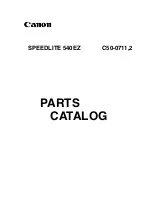
xiX - Technical Manual Version 1.3
87
4.3.2.3.
Triggered acquisition - single frame
Sensors support exposure overlapped with readout. When the trigger period (t
tper
) is longer than the exposure plus readout time,
exposure is not overlapped with readout. However, when the trigger period is decreased, the sensor will expose the images in
overlap mode. In this case, the frame active signal will be constantly active. The trigger period needs to be long enough, so the
exposure of next frame does not end sooner than readout of previous frame.
Sensor timing in Exposure Overlapped with Data Readout Mode
figure 4-4, acquisition mode – triggered with overlap
Description:
t
eio
– Trigger (Digital Input) to Exposure Active (Digital Output)
t
exp
– Trigger (Digital Input) to start of exposure
t
exps
– Current Exposure Time set (XI_PRM_EXPOSURE)
t
fot
– Frame overhead time (FOT)
t
rd
– readout time (Readout Time)
t
row
– readout time of one row (Line period) depends on sensor settings
Conditions: Debounce on trigger input line and trigger delay are disabled.
The timing strongly depends on camera settings. Most of the times can be calculated using
Camera performance calculator:
https://www.ximea.com/support/attachments/download/7828/Camera_Performance_Calculator.xlsm.
The delay between trigger input and start of exposure:
=
+
Where:
t
sensdelay
– Delay introduced by sensor itself. For most sensors the delay is constant.
Cameras with CMV50000 sensor have this time dependent on setting of the sensor. Namely it is line period and
bandwidth limit.
For cameras featuring Sony IMX sensors the
= 3 ×
t
idelay
– Delay inside camera caused by internal electronics. This depends on input type.
Please refer to:
3.10.1 Optically isolated Digital Input
or
3.10.3 Non-isolated Digital Lines
The output signaling is then delayed by the delay introduced from the output electronics.
=
+
Where:
t
odelay
– Delay inside camera caused by internal electronics. This depends on output type.
Please refer to:
3.10.2 Optically isolated Digital Output
3.10.3 Non-isolated Digital Lines
For minimum trigger period (t
tper
) the following applies. The next trigger after one is processed needs to be applied so the end of
the triggered exposure does not overlap with the readout of the previous frame.
For exposures shorter than readout time:
> max
( ,
) +
Ready
Exposure
Data readout
Exposure
Data readout
Digital Input Trigger
Exposure active
Frame active
t
rd
t
exps
t
exp
t
eio
t
tper
t
fot
















































